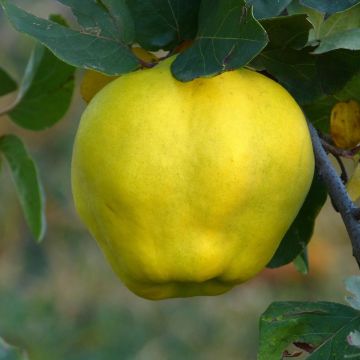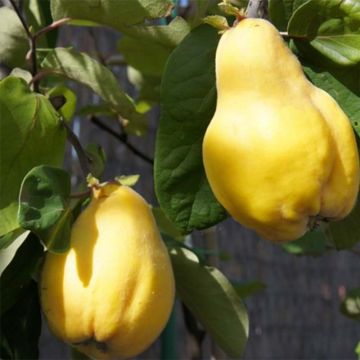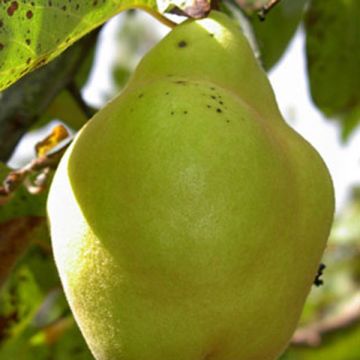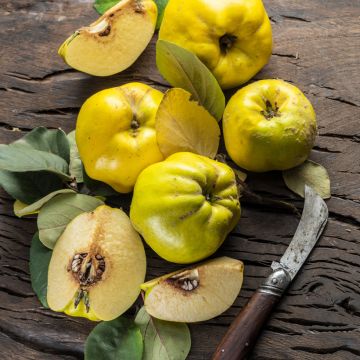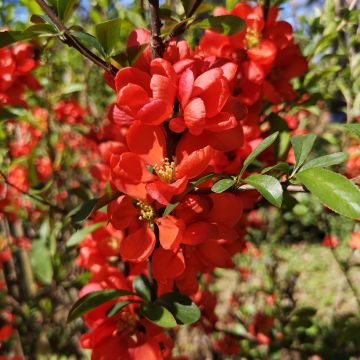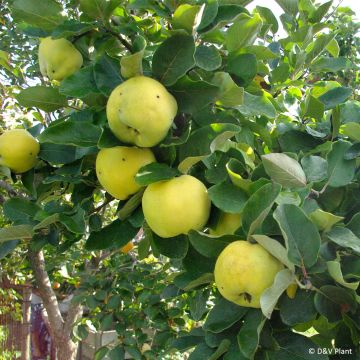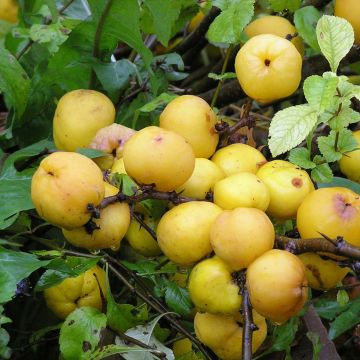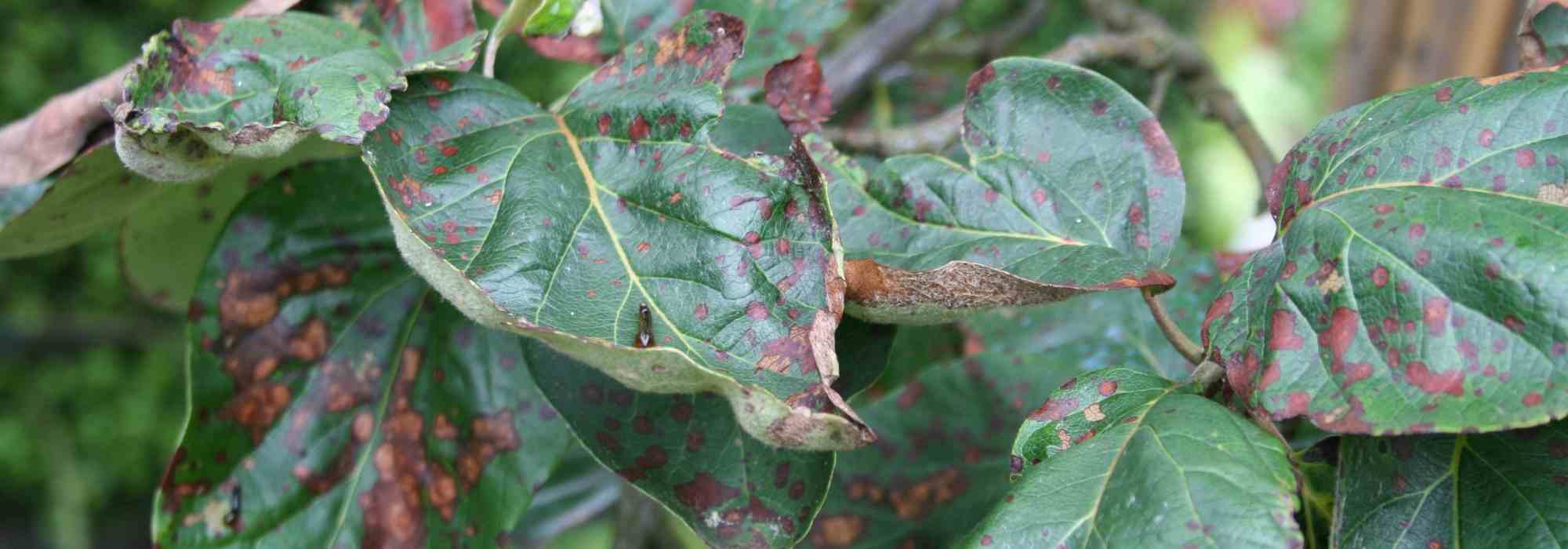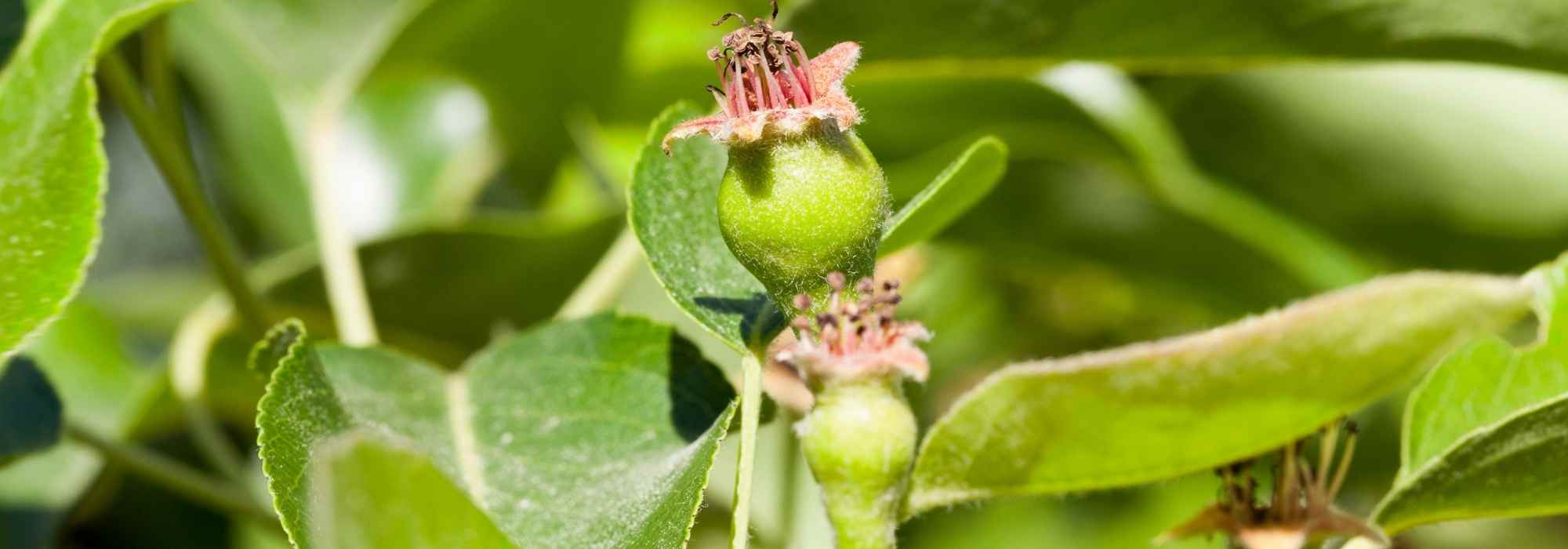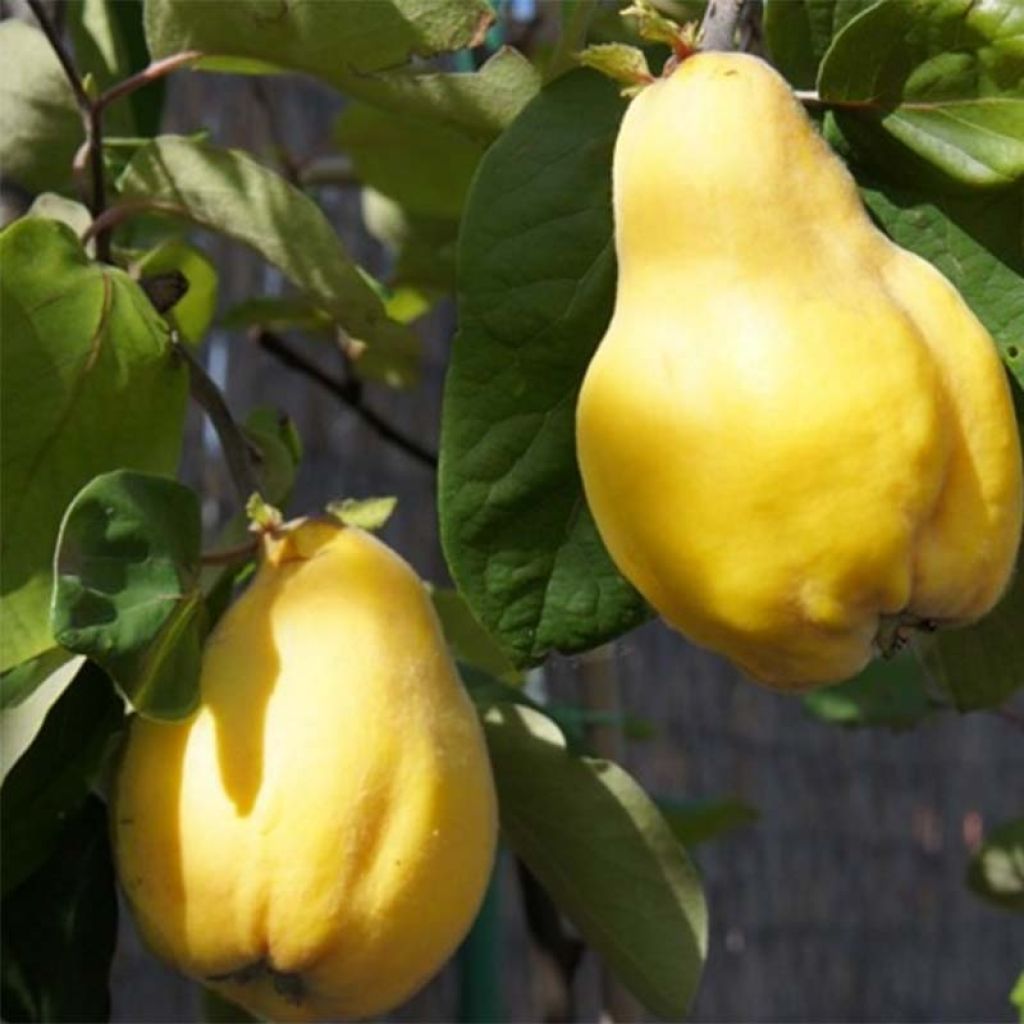

Cognassier Monstrueux de Vranja Bio en racines nues, forme scion
Organic Quince Monstrueux de Vranja - Cydonia oblonga
Cydonia oblonga Monstrueux de Vranja
Quince
Première déception... Commandé le 7/11 et livrable sous 4 jours mais dès le 3/12, pas reçu (?) Réexpédié le 12/12 enfin reçu dans les temps mais je l'ai trouvé très sec en racines nues, planté dans la foulée avec composte et bon terreau, arrosé de 20l d'eau de pluie. Signalé par téléphone et pris en compte par le sav....à suivre au printemps pour savoir s'il reprend...
Christian, 18/12/2023
Special offer!
Receive a €20 voucher for any order over €90 (excluding delivery costs, credit notes, and plastic-free options)!
1- Add your favorite plants to your cart.
2- Once you have reached €90, confirm your order (you can even choose the delivery date!).
3- As soon as your order is shipped, you will receive an email containing your voucher code, valid for 3 months (90 days).
Your voucher is unique and can only be used once, for any order with a minimum value of €20, excluding delivery costs.
Can be combined with other current offers, non-divisible and non-refundable.
Home or relay delivery (depending on size and destination)
Schedule delivery date,
and select date in basket
This plant carries a 6 months recovery warranty
More information
We guarantee the quality of our plants for a full growing cycle, and will replace at our expense any plant that fails to recover under normal climatic and planting conditions.

Description
The 'Monstrueux de Vranja' Quince is a fertile variety with medium vigour, with fruits that can weigh over 1kg. The quinces reach maturity around mid-October, they are pear-shaped, ribbed, yellow-green in color, covered with a light velvety film. Their highly fragrant flesh is firm and moderately sweet. Astringent when raw, the quince's flesh reveals its flavor and aroma when cooked. It is delicious in compotes with apples, in jams, jellies, fruit pastes, pies, and crumbles, as well as in sweet/savory dishes. Plants from Organic Agriculture.
The quince tree, in Latin Cydonia oblonga, belongs to the Rosaceae family, just like the apple tree and the pear tree. This bush is native to the temperate regions of the Caucasus and Iran, from the Caspian Sea to the Black Sea: Iran, Armenia, Azerbaijan, Turkey, Caucasian Russia, Turkmenistan. It has naturalized in France, mainly in the South. It is a small deciduous and hardy tree, with a spreading habit and a rounded crown, whose foliage falls in autumn. The 'Monstrueux de Vranja' cultivar was selected in southern Serbia around 1898. It thrives in ordinary soil, neither too chalky nor too dry, and prefers deep and fertile land. This variety is self-fertile, but fruit production will be greater in the presence of another quince tree that blooms simultaneously. Production is good and regular in most regions.
The Organic 'Monstrueux de Vranja' Quince is moderately vigorous, it has a very upright habit and will reach an average height of 4m (13ft) and a width of 2m (7ft) at maturity, depending on growing conditions. This variety is easy to shape. Its leaves are trailing, entire, measuring 6 to 11cm (2 to 4in) long, with a velvety edge. They are a medium green colour. 'Monstrueux de Vranja' blooms in April, it is mid-late flowering and appears two days before the 'Champion' quince tree. The flowers have 5 white-pink petals and measure approximately 4cm (2in) wide. After pollination, the fruits form and reach maturity from October 15 onwards, depending on the regions. The quinces have an irregular and elongated pear shape, they are sometimes slightly heterogeneous in terms of size, and each weighs from 200g up to 1.2kg. When immature, they are green and covered with a fuzzy down. They lose a good part of this down by the end of autumn when the fruit changes colour and turns yellow. They are very hard fruits, with thick skin, enclosing firm flesh that is pale yellow to whitish in colour, pleasantly fragrant. The heart of the fruit contains brown seeds.
Easy to grow, the 'Monstrueux de Vranja' Quince likes sunny situations, rich, deep soils without excessive limestone. Very hardy, it can thrive in all regions, but needs warmth in autumn for proper fruit ripening. Since quinces affect the ripening of other pome fruits, it is advisable not to store them together. The main pests of the quince tree are aphids and codling moth, and the main diseases are quince leaf blight and brown rot (storage diseases).
For transport reasons, our tallest scions may be pruned before shipping. They are suitable for all common training sizes: cordons, espaliers, goblets, half-standards, and low standards, except for high standards. If you would like more information or advice on training your fruit trees, please do not hesitate to contact us.
Organic Quince Monstrueux de Vranja - Cydonia oblonga in pictures
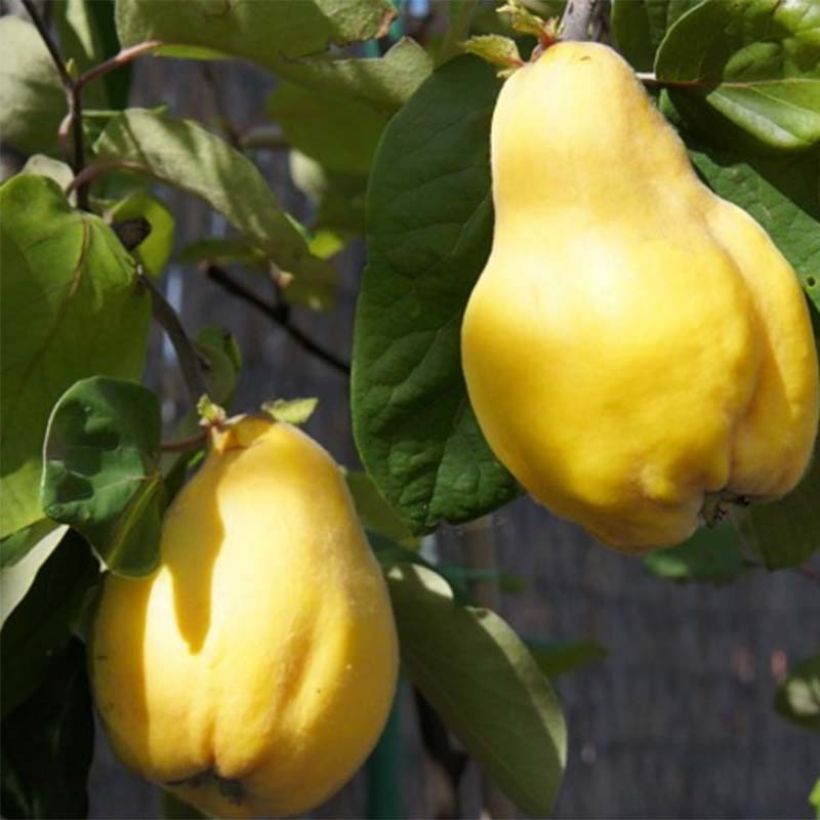

Plant habit
Fruit
Flowering
Foliage
Botanical data
Cydonia
oblonga
Monstrueux de Vranja
Rosaceae
Quince
Cultivar or hybrid
Other Quince trees
View all →Planting and care
Easy to maintain, the 'Monstrueux de Vranja' Quince does not require much pruning, a light pruning of the tips at the end of fruiting every 4-5 years will be necessary to maintain balanced branches. Add a small handful of wood ash, rich in potash, to it every winter, this will improve fruiting. It can be planted in autumn or early winter, outside the freezing period. This fruit tree grows in any deep, loose soil, without excessive limestone and not too dry. A fairly long and warm summer is necessary for proper fruit ripening.
Planting period
Intended location
Care
Planting & care advice
-
, onOrder confirmed
Reply from on Promesse de fleurs
Haven't found what you were looking for?
Hardiness is the lowest winter temperature a plant can endure without suffering serious damage or even dying. However, hardiness is affected by location (a sheltered area, such as a patio), protection (winter cover) and soil type (hardiness is improved by well-drained soil).

Photo Sharing Terms & Conditions
In order to encourage gardeners to interact and share their experiences, Promesse de fleurs offers various media enabling content to be uploaded onto its Site - in particular via the ‘Photo sharing’ module.
The User agrees to refrain from:
- Posting any content that is illegal, prejudicial, insulting, racist, inciteful to hatred, revisionist, contrary to public decency, that infringes on privacy or on the privacy rights of third parties, in particular the publicity rights of persons and goods, intellectual property rights, or the right to privacy.
- Submitting content on behalf of a third party;
- Impersonate the identity of a third party and/or publish any personal information about a third party;
In general, the User undertakes to refrain from any unethical behaviour.
All Content (in particular text, comments, files, images, photos, videos, creative works, etc.), which may be subject to property or intellectual property rights, image or other private rights, shall remain the property of the User, subject to the limited rights granted by the terms of the licence granted by Promesse de fleurs as stated below. Users are at liberty to publish or not to publish such Content on the Site, notably via the ‘Photo Sharing’ facility, and accept that this Content shall be made public and freely accessible, notably on the Internet.
Users further acknowledge, undertake to have ,and guarantee that they hold all necessary rights and permissions to publish such material on the Site, in particular with regard to the legislation in force pertaining to any privacy, property, intellectual property, image, or contractual rights, or rights of any other nature. By publishing such Content on the Site, Users acknowledge accepting full liability as publishers of the Content within the meaning of the law, and grant Promesse de fleurs, free of charge, an inclusive, worldwide licence for the said Content for the entire duration of its publication, including all reproduction, representation, up/downloading, displaying, performing, transmission, and storage rights.
Users also grant permission for their name to be linked to the Content and accept that this link may not always be made available.
By engaging in posting material, Users consent to their Content becoming automatically accessible on the Internet, in particular on other sites and/or blogs and/or web pages of the Promesse de fleurs site, including in particular social pages and the Promesse de fleurs catalogue.
Users may secure the removal of entrusted content free of charge by issuing a simple request via our contact form.
The flowering period indicated on our website applies to countries and regions located in USDA zone 8 (France, the United Kingdom, Ireland, the Netherlands, etc.)
It will vary according to where you live:
- In zones 9 to 10 (Italy, Spain, Greece, etc.), flowering will occur about 2 to 4 weeks earlier.
- In zones 6 to 7 (Germany, Poland, Slovenia, and lower mountainous regions), flowering will be delayed by 2 to 3 weeks.
- In zone 5 (Central Europe, Scandinavia), blooming will be delayed by 3 to 5 weeks.
In temperate climates, pruning of spring-flowering shrubs (forsythia, spireas, etc.) should be done just after flowering.
Pruning of summer-flowering shrubs (Indian Lilac, Perovskia, etc.) can be done in winter or spring.
In cold regions as well as with frost-sensitive plants, avoid pruning too early when severe frosts may still occur.
The planting period indicated on our website applies to countries and regions located in USDA zone 8 (France, United Kingdom, Ireland, Netherlands).
It will vary according to where you live:
- In Mediterranean zones (Marseille, Madrid, Milan, etc.), autumn and winter are the best planting periods.
- In continental zones (Strasbourg, Munich, Vienna, etc.), delay planting by 2 to 3 weeks in spring and bring it forward by 2 to 4 weeks in autumn.
- In mountainous regions (the Alps, Pyrenees, Carpathians, etc.), it is best to plant in late spring (May-June) or late summer (August-September).
The harvesting period indicated on our website applies to countries and regions in USDA zone 8 (France, England, Ireland, the Netherlands).
In colder areas (Scandinavia, Poland, Austria...) fruit and vegetable harvests are likely to be delayed by 3-4 weeks.
In warmer areas (Italy, Spain, Greece, etc.), harvesting will probably take place earlier, depending on weather conditions.
The sowing periods indicated on our website apply to countries and regions within USDA Zone 8 (France, UK, Ireland, Netherlands).
In colder areas (Scandinavia, Poland, Austria...), delay any outdoor sowing by 3-4 weeks, or sow under glass.
In warmer climes (Italy, Spain, Greece, etc.), bring outdoor sowing forward by a few weeks.































